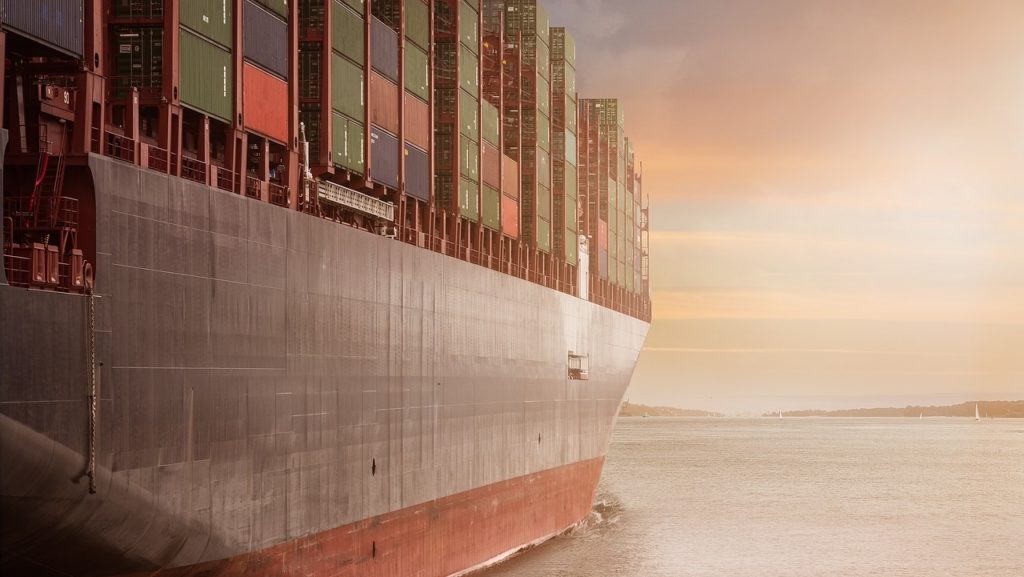Who Cares About the Trade Deficit? We All Should
The trade deficit shattered records in 2021. Things didn’t slow down any as we rolled into 2022. The January trade deficit hit another all-time record high.
But nobody really seems to care.
We should.
As Peter Schiff said last fall, we can’t just ignore these trade deficits forever.
People have been lulled into a false sense of security that it doesn’t matter anymore. Well, the reality is it matters more than ever. It’s precisely because the markets have decided, based on Fed intervention, that trade deficits don’t matter, that they now matter more than ever because they’re larger than ever.”
Antonius Aquinas reiterated the concern, calling these massive trade deficits “a millstone” tied to the US economy.
![]()
The following article was originally published at AntoniusAquinas.com. The opinions expressed are the author’s and don’t necessarily reflect those of Peter Schiff or SchiffGold.
Another milestone (or more accurately millstone) was recently passed by the U.S. economy as the January trade deficit surged to an all-time record high of $107.6 billion, up some $26 billion from December’s $80.7 billion imbalance.
Like the gigantic federal budget deficit, the trade imbalance is no longer talked about by the financial press. There has been little criticism of President Biden on either matter nor are administration officials questioned about how things can be reversed. In fact, some commentators bizarrely contend that trade deficits show how robust an economy actually is!
The trade deficit was supposed to be alleviated by former President Trump, who vowed throughout the 2016 campaign that he would rectify the situation and repeatedly ridiculed U.S. trade negotiators for their lack of financial acumen. He touted that his “friendship” with world leaders, most notably Chinese President Xi Jinping, would result in favorable trade deals for the country.
Trade hawks got on board with Trump’s economic nationalism believing that he would not only fix imbalances but create an American industrial renaissance. Optimism ran high after his unexpected win in 2016.
After a couple of contentious years of on-again, off-again negotiations the first phase of an agreement with China was signed in early 2018. During the negotiations, Trump boasted:
When a country (USA) is losing many billions of dollars on trade with virtually every country it does business with, trade wars are good and easy to win.”
In actuality, China and Trump agreed on nothing significant despite the Trump Administration bragging that it was the first phase of a more comprehensive deal to come. Despite all of the hoopla, the trade imbalance continued to grow and no deal was ever finalized.
Besides the initial agreement with China, the next biggest trade policy act was the scrapping of NAFTA and its replacement with a new treaty, “The U.S.-Mexico-Canada Agreement” (USMCA). The new agreement wasn’t much different than the original treaty.
Thus, by the time he left office in 2020, the U.S.’s trade gap ($68.2 billion) was greater than during his predecessor, Barrack Obama’s term, whom Trump lambasted for his ruinous trade policy.
Trump wisely spoke little about trade during his unsuccessful 2020 re-election bid and, surprisingly, his opponents, despite the president’s miserable failure, steered clear of the issue. Of course, the Democrats were limited in what they could do with an obvious feeble, senile, and vile candidate at the top of their ticket.
Like the Democrats, Trump’s trade-hawk cheerleaders have remained reticent about the escalating trade numbers and like the former president they too, are now discredited when it comes to trade. If America could not overcome its trade gap with an economic nationalist as president for four years, then there must be a problem with their thinking.
The reason why Trump failed – as will Biden – is that he, his negotiators, and the trade hawks who supported him are ignorant of basic economics.
The burgeoning trade deficits are not the result of bad trade deals or ineffective tariff policies. They are the result of a deteriorating U.S. economy which is no longer one of production, but of consumption and debt. A growing economy creates trade surpluses not deficits; it produces more than it consumes.
Because of decades of anti-capitalistic economic legislation – confiscatory taxation, regulatory burdens, inflationary monetary policy, “crowding out” budget deficits, unemployment subsidies, minimum wage laws, and an overemphasis by the establishment on higher education – the U.S. is no longer an industrial power and not a conducive environment for economic growth.
Because it possesses the world’s reserve currency, the U.S. has been able to offset its trade imbalances by importing goods in exchange for dollars. Even with this advantage, however, trade deficits have continued to grow. It appears that even its status as the possessor of the world’s reserve currency may be coming to an end as the dollar’s preeminence will fall with the surge in price inflation. This will have a devastating effect not only on the domestic economy but its foreign trade as well, as the country will not be able to export dollars for goods in the future.
The burgeoning trade deficit is a far more accurate indicator of the health of an economy than GDP, unemployment figures, or the government’s “official” rate of price inflation. All these statistics are so manipulated that they do not come close to showing what is actually happening in the real world. The trade deficit is a more reflective gauge of an economy’s productive capacity.
That Trump posted the largest trade deficit in history also explodes his claim that under his watch, the U.S. had the greatest economy ever! How he calculated and supported such nonsense (which was not challenged by the financial press) is hard to maintain with trade deficits in the stratosphere.
When America’s economy was at its zenith, it was a creditor nation with trade surpluses and producing goods that were sold the world over. It had a high savings rate, a low inflationary environment, little public debt, and respect for private property, particularly the right for entrepreneurs to hire and fire whom they pleased. All socio-economic groups prospered from the free market and free trade, not just the 1%.
The trade deficit can be turned around, but not through bureaucratic state-orchestrated deals which favor big business and multi-national corporations at the expense of American consumers. The proper trade policy is no policy at all, except the freeing of the economy from government intervention.





 Cocoa prices have dumped since rocketing to a dramatic peak last month as an El Nino cycle winds down and traders rush out of the illiquid market. For now, depreciating fiat currencies are still keeping the cocoa price still far above its 2023 levels. Coffee has had a similar rise and subsequent correction — but now, inflation and other factors are conspiring to […]
Cocoa prices have dumped since rocketing to a dramatic peak last month as an El Nino cycle winds down and traders rush out of the illiquid market. For now, depreciating fiat currencies are still keeping the cocoa price still far above its 2023 levels. Coffee has had a similar rise and subsequent correction — but now, inflation and other factors are conspiring to […] California’s government bet that they knew better than the free market. And now millions are paying the price. The story begins in 1919, when the city of Berkley, California instituted legislation setting aside districts that would only allow the construction of single-family housing. The idea spread, and soon much of California’s urban areas had adopted the zoning policy. Today, approximately 40% of the total land in Los Angeles is […]
California’s government bet that they knew better than the free market. And now millions are paying the price. The story begins in 1919, when the city of Berkley, California instituted legislation setting aside districts that would only allow the construction of single-family housing. The idea spread, and soon much of California’s urban areas had adopted the zoning policy. Today, approximately 40% of the total land in Los Angeles is […] The yen was once known as a safe-haven currency for investors to protect themselves when broader markets are shaky or other currencies are dropping, but those days are numbered. A stable government and consistent (and low) interest rates have been some of the driving factors, but it’s the unwinding of that ultra-low interest rate policy that will be the yen’s “safe […]
The yen was once known as a safe-haven currency for investors to protect themselves when broader markets are shaky or other currencies are dropping, but those days are numbered. A stable government and consistent (and low) interest rates have been some of the driving factors, but it’s the unwinding of that ultra-low interest rate policy that will be the yen’s “safe […] Whenever an election year rolls around, domestic manufacturing becomes a more central theme of discussion. Candidates from both sides, who seem to disagree on almost everything else, never waver in their commitment to auto manufacturers in Detroit and the steel industry. Republicans and Democrats never forget to remind the American public that they will try […]
Whenever an election year rolls around, domestic manufacturing becomes a more central theme of discussion. Candidates from both sides, who seem to disagree on almost everything else, never waver in their commitment to auto manufacturers in Detroit and the steel industry. Republicans and Democrats never forget to remind the American public that they will try […] The wizards at the Fed and US Treasury have been forced to acknowledge that their “transitory,” inflation is, in fact, quite “sticky.” And with the inflation elephant now acknowledged by the circus of high finance, Treasury yields keep inching up, recently reaching 4.7% — the highest since November. The Fed is stuck: It needs to raise interest rates to tame inflation and […]
The wizards at the Fed and US Treasury have been forced to acknowledge that their “transitory,” inflation is, in fact, quite “sticky.” And with the inflation elephant now acknowledged by the circus of high finance, Treasury yields keep inching up, recently reaching 4.7% — the highest since November. The Fed is stuck: It needs to raise interest rates to tame inflation and […]